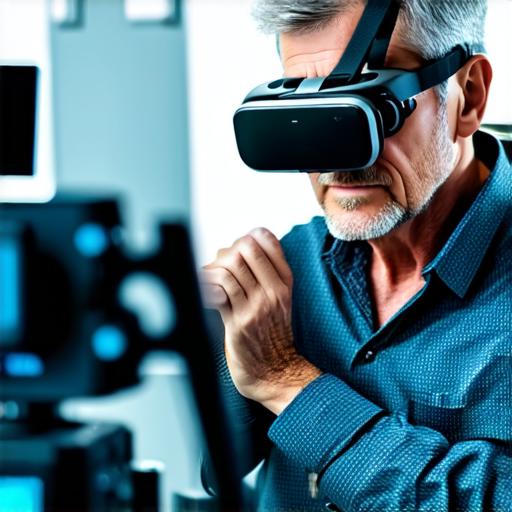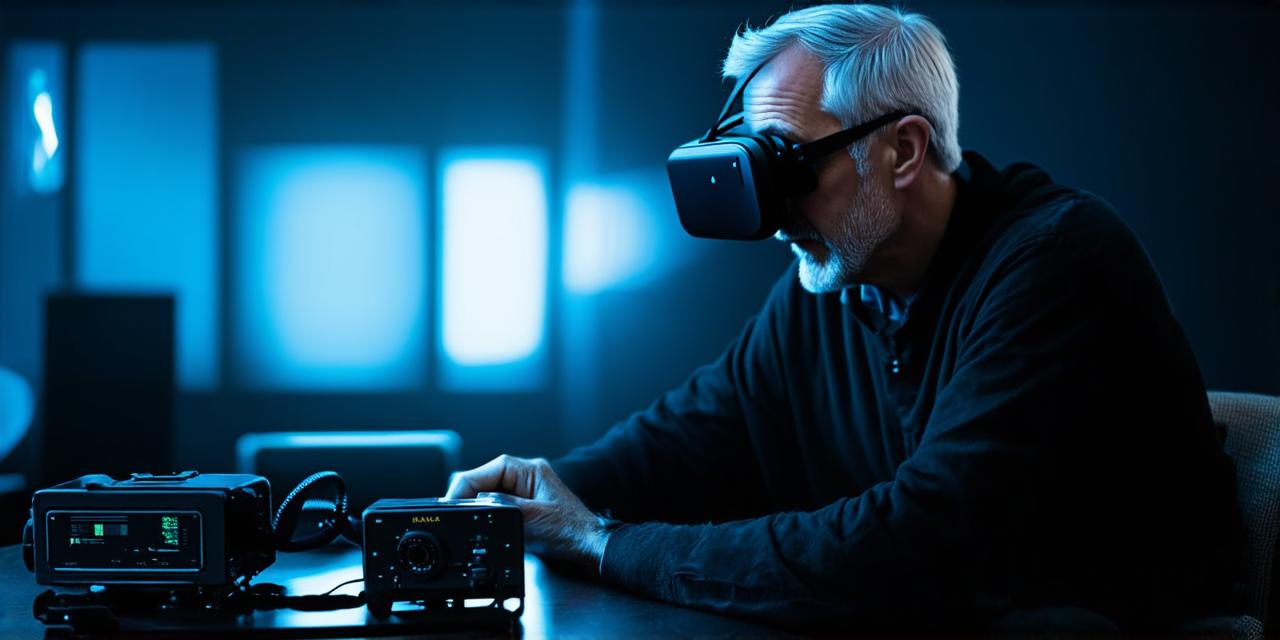
The Risks of VR for the Elderly
Virtual reality technology can have adverse effects on the elderly, particularly those with existing health conditions. According to a study by the University of Oxford, seniors who used VR for more than 15 minutes experienced a significant increase in their heart rate and blood pressure, which could be dangerous for those with pre-existing heart conditions.
Moreover, VR can cause motion sickness, dizziness, and nausea, particularly in people with balance disorders or inner ear problems. In some cases, these symptoms can be severe enough to lead to vomiting or even fainting.
In addition, seniors may struggle with the complexity of VR technology, which requires a certain level of digital literacy and technical know-how. This can make it difficult for them to navigate the virtual environment, which could lead to confusion and frustration.
The Risks of VR for Children
Virtual reality technology is also not suitable for young children. While VR can be a fun and engaging way for kids to explore new worlds and learn about different subjects, it’s important to consider the potential risks involved.
For example, VR headsets can cause disorientation and motion sickness in children, which could lead to nausea and vomiting. In addition, VR games may contain violent or explicit content that could be inappropriate for young children.
Moreover, prolonged use of VR technology can lead to eye strain, headaches, and other vision problems in children, particularly those with pre-existing conditions such as astigmatism or nearsightedness.
The Risks of VR for People with Mental Health Issues
Virtual reality technology can also have adverse effects on people with mental health issues, including anxiety and depression. According to a study by the University of California, people with social anxiety disorder reported increased heart rate and sweating when exposed to virtual scenarios that triggered their anxiety.
Furthermore, VR can be triggering for people with post-traumatic stress disorder (PTSD), particularly those who have experienced trauma related to motion sickness or other sensory overload. In some cases, exposure to these triggers can lead to flashbacks and panic attacks.
In addition, VR technology can be addictive, leading people with mental health issues to spend excessive amounts of time in virtual worlds, which can exacerbate their symptoms and interfere with their daily lives.
The Risks of VR for People with Disabilities
Virtual reality technology is not suitable for everyone, particularly those with disabilities. For example, people with hearing impairments may struggle to hear the audio cues that are essential for navigating virtual environments.
Moreover, VR headsets can be uncomfortable and even painful for people with certain physical conditions, such as arthritis or migraines. In addition, some VR games may not be accessible to people with disabilities, particularly those who use assistive technologies such as screen readers or joysticks.
Conclusion
Virtual reality technology has the potential to enhance immersive experiences across various industries, but it’s not for everyone. It’s essential to consider the potential risks involved before using VR technology and use it responsibly and with caution, particularly in sensitive populations such as the elderly, children, people with mental health issues, and people with disabilities. By doing so, we can ensure that virtual reality technology is used safely and effectively for everyone who benefits from it.
FAQs
Q: What are the potential risks of virtual reality technology?
A: VR can cause adverse effects on the elderly, children, people with mental health issues, and people with disabilities, including increased heart rate and blood pressure, motion sickness, dizziness, nausea, eye strain, headaches, and addiction.
Q: Who should avoid using virtual reality technology?
A: VR is not suitable for everyone, particularly those with pre-existing health conditions, children under the age of 6, people with mental health issues, and people with disabilities.
Q: Can virtual reality technology be addictive?
A: Yes, prolonged use of VR technology can lead to addiction, which can interfere with daily life and exacerbate symptoms in people with mental health issues.
Q: Are there any guidelines for using virtual reality technology responsibly?
A: Yes, it’s essential to use VR technology responsibly and with caution, particularly in sensitive populations such as the elderly, children, people with mental health issues, and people with disabilities. It’s also important to follow safety guidelines, such as using VR headsets for short periods and taking regular breaks to avoid motion sickness and eye strain.
Conclusion
Virtual reality technology has the potential to enhance immersive experiences across various industries, but it’s not for everyone. It’s essential to consider the potential risks involved before using VR technology and use it responsibly and with caution, particularly in sensitive populations such as the elderly, children, people with mental health issues, and people with disabilities. By doing so, we can ensure that virtual reality technology is used safely and effectively for everyone who benefits from it.
